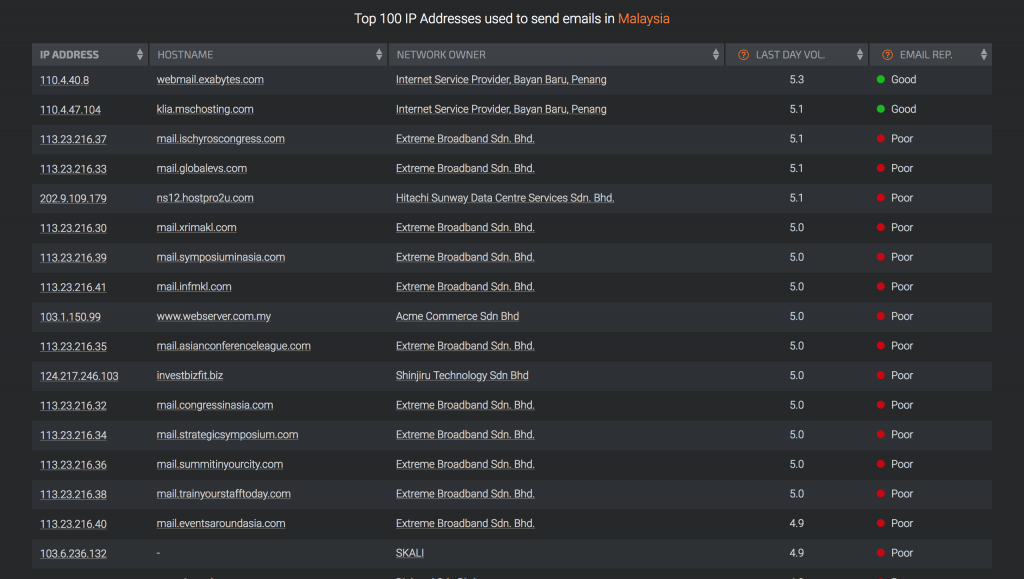We’ve been working closely with one of our email marketing provider partner https://www.irewardsasia.com/ with providing quality email blast to the big players in the Malaysia market.
The of course is not free, in fact it’s charge by per sent. I’ve got the same response from many parties asking why they will need to pay for something free. Sending email is very common since the internet started. And we’ve our personal email address for “free” from Gmail, Hotmail, Yahoo. Well, the term “free” isn’t really free technically, you used their services, and they have the rights to analysis your email content.
Anyway, in Malaysia we’ve tons of email blasting providers, and most of the are really dirt cheap. But you won’t know how effective is your email. If you are current engaging with any email blast provides, please subscribe to a inbox monitoring tools to understand that the percentage of your emails are delivered into spam box or email. 10 Best Email InBox Monitoring Tools
Our recent report from Talos by Cisco, has a good indication how bad is our emails. The top 10 of local domains that sending emails mostly are hosting providers in Malaysia.

https://www.talosintelligence.com/reputation_center/lookup?search=Malaysia
Most of the service providers basically don’t care about the reputation, and just ignore all the alert and warning given by the ISP. To be a responsible and good sender you show follow the following steps to take care your IPs and servers,
- Make sure the receptions are collected in genuine ways. Don’t use unattended database list where by the sender will receive tons of spam complaint and the IP address will be easily blocked by the big ISP like Hotmail, Gmail and Yahoo. Most of the system providers have their “add on” services, which is selling database list to their clients and claim that it’s very effective. The fact is this kind of email usually will be blocked and the result will not be good. As a smart consumer, you should always request for the access for your system to checkout the delivery reports instead of depending on your service providers to provide the “excel” reports to you which they may bush it nicely before its in your hand.
- Always comply with the rules set by the ISP. SPF, DKIM and DMARC are very important for your mailing address. And what is it?SPF (Sender Policy Framework) is a DNS text entry which shows a list of servers that should be considered allowed to send mail for a specific domain. Incidentally the fact that SPF is a DNS entry can also considered a way to enforce the fact that the list is authoritative for the domain, since the owners/administrators are the only people allowed to add/change that main domain zone.DKIM (DomainKeys Identified Mail) should be instead considered a method to verify that the messages’ content are trustworthy, meaning that they weren’t changed from the moment the message left the initial mail server. This additional layer of trustability is achieved by an implementation of the standard public/private key signing process. Once again the owners of the domain add a DNS entry with the public DKIM key which will be used by receivers to verify that the message DKIM signature is correct, while on the sender side the server will sign the entitled mail messages with the corresponding private key.
DMARC (Domain-based Message Authentication, Reporting and Conformance) empowers SPF and DKIM by stating a clear policy which should be used about both the aforementioned tools and allows to set an address which can be used to send reports about the mail messages statistics gathered by receivers against the specific domain.For more info: SPF, DKIM and DMARC brief explanation and best practices
- Always manage your list. Most senders didn’t “manage” their list. We often received bounces (both soft and hard) after our email blast. Removing the hardbounce is very important because ISP will block your IP address if they continuously sending hardbounce alert back to your server. While softbounce will turn into hardbounce after more than “x” times of attempts. Some senders didn’t bother to isolate all the unsubscribe emails, continue blast their emails to those who have clicked unsubscribe. This will only leads to the ISP to rate you as a spammer and therefore your email will reach the genuine recipients’ spam box.
There are more ways to help you in making sure most of your emails will land into inbox. If you are interested do give us a call.
